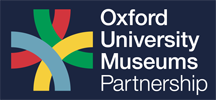 On 14th March 2013, 33 delegates from across the country converged on Worcester College, Oxford for a day of discussion around individual giving. Colleagues came from as far afield as Exeter, Sheffield, Birmingham and Norfolk to share ideas on Friends, Patrons and major gifts.
On 14th March 2013, 33 delegates from across the country converged on Worcester College, Oxford for a day of discussion around individual giving. Colleagues came from as far afield as Exeter, Sheffield, Birmingham and Norfolk to share ideas on Friends, Patrons and major gifts.
Friends and Patrons at the Ashmolean
The day kicked off with a presentation from Natasha O’Farrell and Polly Nuttgens from the Ashmolean on how they manage their Friends and Patrons schemes. They explained that both groups are independent Trusts run by volunteer Friends and Patrons, with the assistance of a few key members of staff within the Museum, including Natasha and Polly. As Trusts, at certain times in the year the Friends and Patrons give the Ashmolean grants to support their work.
The current membership fee for the Friends of the Ashmolean is £35 per year, and the scheme has over 3,000 members. Benefits of being a Friend include free entry into all the Ashmolean’s paying exhibitions, a varied programme of activities including private views, lectures by Ashmolean experts, and organised visits to other important collections around the UK, free copies of the Museum’s magazines and 10% discount in the Ashmolean café, Dining Room and shop. The higher joining fee Patrons’ organisations include a number of additional benefits, including an invitation to join the Director on an annual spring trip.
Natasha and Polly agreed that despite being volunteer led, organising events for and communications with the Ashmolean’s Friends and Patrons organisations is a significant time commitment, but one that it was beneficial. Friends and Patrons schemes provide a mechanism for including supporters in the Museum’s community, further nurturing that relationship. These relationships can be important to the development of the Museums and its collections. For example, in 2012 when the Ashmolean had only a few months to raise sufficient funds to purchase Manet’s portrait of Mademoiselle Claus, members of the Friends made individual donations adding up to around £50,000.
Find out more about the Ashmolean Friends and Patrons organisations here.

Patrons of Modern Art Oxford
Next to share their experiences were Verity Slater, Director of Communications and Development, and Katherine Proudlove, Communications and Development Assistant, from Modern Art Oxford (MAO). With a staff contingent of 15 FTE (core team), in recent years Modern Art Oxford have moved away from the large scale Friends and Patrons schemes that are imbedded in national museums and galleries. With annual Friends membership renewals numbering around 200 it is not resource efficient to offer an intensive programme of activity, so they have limited their membership to a few key benefits (10% discount in the cafe, bar and shop, free entry to selected ticketed events, invitation to exhibition previews and a printed programme) and focus on promoting their Friends organisation as an accessible way of supporting the organisation.
Modern Art Oxford focuses greater resource on developing individual relationships with higher-level donors, who they ask to make a minimum contribution of over £2,000 each year. Approaching individuals with a particular interest in elements of their exhibitions and learning programmes, strategic projects, or who has previously supported an artist, they develop bespoke personal relationships with these individuals. Each relationship is resource intensive, but the number of those relationships is significantly smaller than a traditional membership organisation. MAO’s Senior Management Team, Director and Trustees are all engaged in Development work. MAO also works with existing supporters to broker introductions to new prospects. The gallery has tiered levels of giving including a Director’s Circle, Galleries Circle, Patrons and Friends.
Find out more about Modern Art Oxford's Patrons here.
Do you need a Friends organisation?
Judy Niner from Development Partners was also present on the day, and explained to the group why she would not be developing a Friends scheme for Cogges Farm, where she sits on the Board of Trustees. Judy felt that with Cogges, based on the relatively small number of Friends that were likely to be attracted, the investment (particularly in staff resource) in maintaining such a scheme would not be worth the return. In addition, many of the benefits that Friends receive such as free entry to exhibitions and shop discounts could still be provided for those who are interested in the form of a season pass, but would not require the same commitment of resources. Her plan for Cogges is similar to the approach taken at Modern Art Oxford, to focus on developing bespoke relationships with key supporters.
This discussion raised the question of whether museums and cultural organisations need Friends schemes. The consensus was that large organisations such as the National Museums benefit from Friends schemes, as they have enough members to make it a valuable source of support for the museum, and for the membership package to be an effective method of managing those relationships. It was felt that for smaller organisations, having a fully-fledged Friends organisation was not necessarily a viable option. Even if as smaller organisation raised the level of support required to be a Friend, limiting the number and increasing the value of the investment, many of the group thought that a Friends scheme was still unlikely to be the best way forward - it would be more beneficial to build one-to-one relationships.
Major Gifts
Following these conversations the focus of the day turned from Friends and Patrons on to securing major gifts, with a lively presentation from Emily Magnuson and Anh Nguyen, both Major Gift Managers at the Ashmolean Museum.
 They talked the group through ways of identifying major donors, emphasising the importance of keeping up to date records of existing supporters and using your network! Your organisation’s curators and existing supporters are likely to know other people who may also want to support your institution, and can make important introductions. They also explained that a development professional needs to be a consummate networker, and should spend a significant amount of their time ‘on the road’ meeting new people and expanding their network.
They talked the group through ways of identifying major donors, emphasising the importance of keeping up to date records of existing supporters and using your network! Your organisation’s curators and existing supporters are likely to know other people who may also want to support your institution, and can make important introductions. They also explained that a development professional needs to be a consummate networker, and should spend a significant amount of their time ‘on the road’ meeting new people and expanding their network.
Emily and Anh then stressed the importance of research. By knowing what a prospect is interested in and what they have given to in the past, you are better able to match the right project with the right prospect. Also, before approaching a prospect it is important to be aware of what is going on around them – it could be disastrous to approach them at an indelicate time of financial issues, personal bereavement, etc.
Next they discussed the importance of the right person making contact: it is rarely the development officer that makes first contact, there should be a personal introduction from someone in your network, or a curator from an area of their interest should make the approach. A top tip when contacting a prospect: treat the prospect’s PA like the prospect themselves – befriend gatekeepers.
When cultivating a major donor make sure you bring them to your location as the collections and the building and the work that’s going on sell themselves in a way that cannot be translated without the experience.
Emily and Anh then discussed ‘the ask’, the most difficult but most important part of the process. They shared personal experiences, both positive and less successful. The key message was to rely on your instincts to know if it’s right, and also ask yourself is this the right project, right amount, right person and right time?
Once you’ve done the ask whether the answer was “Great, love your work, here’s a cheque”, “sorry I’m committed to other projects at this time”, “no” or non committal, it is important to maintain the relationship, to demonstrate to the donor the gratitude of the organisation and the results of their investment, to keep them connected in case they would like to support the organisation further, and to expand your network and introduce you to other people who may wish to support you.
What will you do differently?
At the end of the day’s discussion delegates were asked what they will do differently when they return to their organisation.
Top responses:
- Review our Friends scheme to ensure its long term sustainability
- Find a small number of ‘super-Friends’ with the potential to be major supporters of the organisation
- Reassess the benefit of a regular giving scheme vs a membership scheme
- Review the cultivation and stewardship of Friends and Patrons
- Strategic review of major gifts, how we approach it and the resources required.

